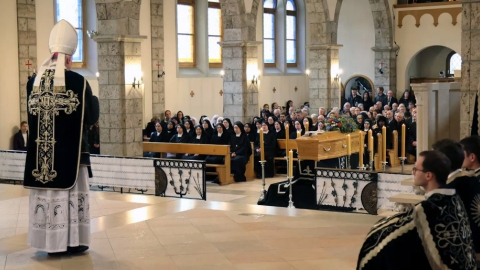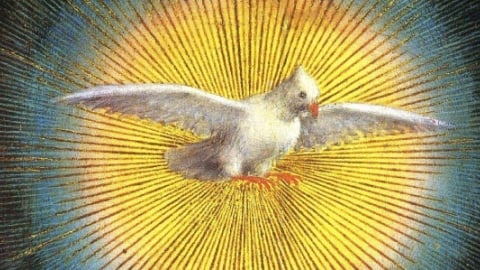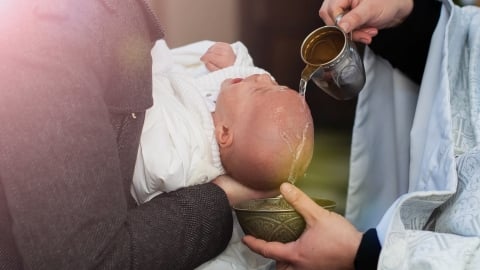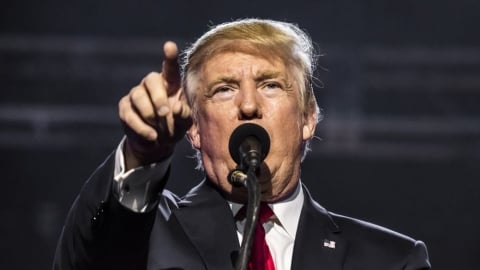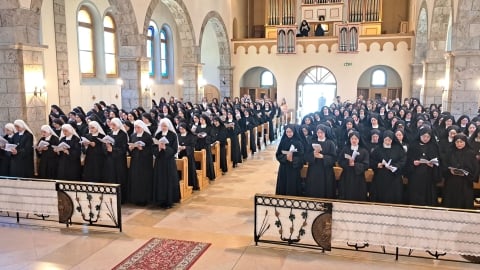Canonization doubts for John XXIII & John Paul II

The SSPX outlines some doubts that it has regarding the proposed canonizations of Popes John XXIII and John Paul II.
Doubts about John XXIII and John Paul II’s canonizations
On September 3, 2013, at the consistory held in Rome that day, Pope Francis announced that he would canonize John XXIII (1958–1963) and John Paul II (1978–2005) at the same ceremony on April 27, 2014.
Ever since Angelo Giuseppe Roncalli’s beatification on September 3, 2000, and Karol Wojtyla was beatification on May 1, 2011, the Society of St. Pius X has expressed very serious misgivings.
Unanswered questions
With regard to John Paul II, these misgivings were expressed in a theological study which was submitted to the Roman authorities several times by several different means in vain, unfortunately. No consideration was given to the study, made public by Bishop Bernard Fellay on March 25, 2005. In its preface, the Superior General of the Society of St. Pius X discussed his attempts to bring his grave concerns about John Paul II’s pontificate to the attention of the proper authorities.
Following Archbishop Marcel Lefebvre’s publicly expressed opinions on John Paul II, the Society of St. Pius X was unable to silence these concerns. I therefore asked Fr. Patrick de La Rocque to draft a document that could be submitted to the ecclesiastical authorities in charge of the diocesan process, to whom fell the duty of assembling all witness reports, both favorable and unfavorable, on the reputation of John Paul II.
This document, which forms the content of this book, was sent according to the usual procedure to a number of authorities involved in the diocesan process, so that it might be included among the evidence for the case and examined as carefully as the rest. It arrived at the proper office on time, but was mysteriously set aside and only opened the day after the diocesan process closed, in other words, too late to be taken into consideration. Therefore it was not included among the tens of thousands of pages solemnly handed over to the Congregation for the Causes of the Saints. It was brought to the attention of the Roman tribunals by another means, but our questions received no answer, unfortunately, quite the opposite; on December 19, 2009, the Holy See declared the deceased pope’s heroic virtues.
Should we then become silent? Strengthened by the Apostle’s recommendation—“Preach the word: be instant in season, out of season” (II Timothy 4:2)—we elected to send a copy of this manuscript to our Roman correspondents during the doctrinal discussions between the Society of St. Pius X and the Holy See, and informing them of our intention to publish.
Whether coincidentally or no, the world learned a few days later that the beatification process was temporarily halted, due to the lack of sufficient evidence in support of the ‘miracle’ supposedly obtained through John Paul II’s intercession. However, this same ‘miracle’ was eventually approved a few months later, and the beatification ceremony was scheduled for May 1, 2011. These pages regained therefore all of their former relevance, and so I asked that they be published.” (Preface to Jean-Paul II, doutes sur une beatification, [John Paul II: doubts about his beatification] Clovis, pp. 11–12)
Undispelled doubts
What were the profound doubts about the validity of John Paul II’s beatification? They were raised by the unheard-of speed with which the case was processed, and also by the verified facts that, sadly, punctuated his pontificate, but above all by the “humanism” that formed the fundamental unity between Karol Wojtlya’s thought and his actions. These same doubts remained undispelled at the announcement of his forthcoming canonization, all the more because not one Roman authority could or would respond to them. Bishop Fellay summarized them in these words:
One month after the death of John Paul II, Pope Benedict XVI authorized the opening of his predecessor’s case for beatification. Less than two years was judged sufficient to conclude the diocesan process, and two other years to raise Karol Wojtyla to the rank of ‘Venerable’; on December 19, 2009, Benedict XVI signed the decree recognizing Karol Wojtyla’s heroic virtues, paving the way to his beatification, scheduled for May 1, 2011.
The rush that surrounded this beatification is not only regrettable in light of posterity’s judgement on this pontificate. Its most significant consequence is to neglect the serious questions addressed to the Catholic conscience, in particular with regard to the virtues that define Christian life, the supernatural and theological virtues of faith, hope and charity. In light of the first commandment of God, for example, how can we evaluate the acts of a pope who, by his words and by his kiss, seemed to raise the Koran to the same level as the Word of God (Rome, May 14, 1999)? who prayed to St. John the Baptist for the protection of Islam (Holy Land, March 21, 2000)? who was proud of actively participating in animist rituals in the sacred forests of Togo (August 9, 1985)?
A few decades ago, such actions would have sufficed to cast suspicion of heresy onto their author. And today, as if by magic, they have become the sign of the virtue of faith practiced to a heroic degree? The pontificate of John Paul II and the countless innovations that punctuated it—from the interfaith meeting at Assisi (October 27, 1986) to the numerous apologies (including a ceremony of general repentance at St. Peter’s in Rome on March 12, 2000), to the first visit of a pope to a synagogue (Rome, April 13, 1986)—cannot but raise serious questions for Catholic consciences, questions that become more pressing when, through a beatification, such practices are held up as examples for the Christian people...
The author could, in his study, have drawn from the countless surprising, disturbing, and even scandalous facts that pervaded this pontificate. Was it dignified and acceptable for a Catholic pope to receive the sacred ashes of Shiva (Madras, February 5, 1986)? To pray in the Jewish manner at the Wailing Wall (Jerusalem, March 26, 2000)? To have the epistle read in his presence by a topless woman (New Guinea, May 8, 1984)?
So many facts could have been brought up which at the very least cast a shadow over this pontificate and must disturb any truly Catholic soul. These pages, however, do not limit themselves to a purely factual dimension, but take us to the heart of the problem by exposing the essential point of this pontificate’s axis: the ‘humanism’ of John Paul II, its avowed assumptions and its inevitable consequences, a ‘humanism’ whose most striking illustration was the interreligious meeting at Assisi in 1986.
If Fr. de La Rocque presents, in three different chapters, several of the main obstacles to John Paul II’s beatification, his analysis shows the fundamental unity of Karol Wojtyla’s thought and action, whose compatibility with Catholic tradition is difficult to establish, it must unfortunately be recognized.” (Ibid., pp. 10–11, 13) [Dates and places in parentheses are DICI’s—Ed.]
A problematic beatification
On the occasion of John XXIII’s beatification, the Society of St. Pius X also published several studies, including: “John XXIII’s ‘goodness’”, by Fr. Michel Simoulin, originally published in Italian by La Tradizione Cattolica (#43, March-April 2000), and summaried by its author in Fideliter (#136, July-August 2000). In 2008, Fideliter (#182, March-April) consecrated a chapter to the “Saints of the Council”, and published in it an article by Fr. Philippe Toulza: “Blessed John XXIII?” Here are some extracts from these questions still so legitimate today:
When, shortly before his death, Pope John XXIII published his encyclical Pacem in terris, he defended in it a certain religious liberty that, without being explicitly heterodox (for there is a doubt as to what ‘religion’ he was talking about), is ambiguous. The vision of a rather naturalistic perspective that he gives to the ideal society is founded on the dignity of the human person.
Lastly, without openly joining the modernist camp, John XXIII showed a liberal attitude. His affection went out naturally to anything that sought to reconcile the modern world with the faith. He admitted one day that he himself went back and forth between his attraction for "the light of the new times" and the old spirit, incarnated in the old parish priests that had marked his youth. He was interested in historical critique, but did not want to abandon the authority of the Church. More drawn to history than to philosophy or theology, he kept his distance from the modernist intellectual turmoil, yet scarcely appreciated condemnations of it. He said one day to Cardinal Casaroli: "Eminence, the Church has many enemies, but she is an enemy to no one."
Where does this fundamental tendency that we have just described come from? From a deficient doctrinal formation? Surely more from a temperament inclined to total indulgence, a false imitation of true goodness. Not once do we see the priest, the bishop, the pope pronounce sanctions against error and evil. He is always blessing, but never reproves. He is always making friends, and never has any troubles, except a suspicion of liberalism. He who preferred to consider God ‘as a mother rather than a father’ had to control the conflict between Cardinals Bacci, Ottaviani, Ruffini and Browne on one side, and the modernist cardinals and theologians on the other, during the first session of Vatican Council II. What did he do? Certainly not what St. Pius X would have done. But neither did he go so far as to support the innovators as openly as Paul VI.
He consoled the complaints of the traditional cardinals by giving them history lessons. He refused to take sides to settle the quarrels, recalling the ‘holy freedom of the children of God’ and clearly expressing his attitude by quoting Scripture (the story of Joseph and his brothers): ‘As for the Father, he watched (the disagreements among his sons) and said nothing.' He said nothing? In these circumstances, refusing to decide meant helping the conspiracy of the innovators. In fact, he tacitly approved the liberals’ taking over the Council, to the detriment of the Curia.
The beatification of John XXIII is problematic. For to beatify is to offer a model of Christian virtue to Catholic souls. Was John XXIII a model of personal piety and submission? God alone knows. But, in other respects, in spite of certain doctrinal positions that seem very traditional, the scales tilt towards Father, Bishop and Pope Roncalli’s adherence to the aggiornamento of the Church, his esteem for Christian democracy, his refusal of any doctrinal condemnation, his ecumenism, his favors to the wing that brought the revolution into the Church of God at Vatican II. When a pope has the obvious duty to guarantee order and keep the wicked from acting, when he is still able to do so and does not do so, when his heart and actions tend toward those at fault, who is to convince us that he is the model of a good pope?" (Fr. Philippe Toulza, Fideliter #182, March-April 2008, p. 14-15)
Well-founded doubts
The serious problems with the beatification of John XXIII and John Paul II, and the difficulties that result now from their canonization, force us to question the soundness of the beatifications and canonizations proclaimed since Vatican Council II, according to a new procedure and unheard-of criteria. Le Courrier de Rome #341 (February 2011) published a study under the title “Beatification and Canonization since Vatican II”, in which Fr. Jean-Michel Gleize, professor of Ecclesiology at the seminary of Econe, points out three difficulties that show how far our doubts on the question are from being groundless. Here is a summary by the author himself.
Fr. Gleize's summary
Without pretending to give the final word on the matter (for that is reserved to God), we can at least point out three major difficulties that suffice to raise doubts as to the soundness of the new beatifications and canonizations. The first two question the infallibility and certitude of these acts. The third questions their very definition.
The first difficulty: inadequacy of procedure
The divine assistance that causes the infallibility of dogmatic definitions works providentially. Far from dispensing the pope from having to examine carefully the sources of Revelation transmitted by the Apostles, it requires this examination by its very nature.
This is truer still for canonization: it supposes the most serious of human testimony attesting the heroic virtue of the future saint, as well as an examination of the divine testimony of miracles, at least two for a beatification, and two others for canonization.
The procedure followed by the Church until Vatican II was the expression of the utmost rigor. The process for the canonization itself relied upon a double process carried out at the time of the beatification, one that took place before the tribunal of the Ordinary acting in his own name; another that depended exclusively on the Holy See.
The process of canonization comprised the examination of the brief of beatification, followed by the examination of two new miracles. The procedure concluded when the Sovereign Pontiff signed the decree; but before giving his signature, he held three consecutive consistories.
The new norms introduced by John Paul II in 1983, in the apostolic constitution Divinus Perfectionis Magister, confide the essential part of the inquiry is confided to the local bishop: he is the one who investigates the life of the saint, his writings, virtues, and miracles, and establishes the dossier sent to the Holy See.
The Sacred Congregation examines this dossier and makes its pronouncement before submitting everything to the judgment of the pope. Only one miracle is now required for beatification and, once again, only one for canonization.
Access to the dossiers for causes of beatification and canonization is not easy, which hardly affords an opportunity to assess the seriousness with which the new procedure has been implemented. But it is undeniable that by the very terms of the new procedure, it is no longer as rigorous as formerly. It realizes all the less the guarantees that should be forthcoming from churchmen for divine assistance to assure the infallibility of canonizations and, with greater reason, the absence of factual error in beatifications.
Incidentally, Pope John Paul II decided to bend the current procedure (which stipulates that a cause for canonization cannot begin until five years after the death of a servant of God) by authorizing the introduction of the cause of Mother Teresa scarcely three years after her death. Benedict XVI has acted likewise for the beatification of his predecessor. Doubt can only be the more legitimate considering the wisdom of the Church’s proverbial slowness in these matters.
Second difficulty: collegiality
An attentive examination of the new norms reveals that the legislation reverts to what was in place before the XIIth century: the pope leaves it to the bishops to make a direct judgment of the causes of saints and reserves to himself only the power to confirm the judgment of the Ordinaries.
As John Paul II explained it, this regression is a consequence of the principle of collegiality:
In light of the doctrine of the Second Vatican Council on collegiality, We also think that the bishops themselves should be more closely associated with the Holy See in dealing with the causes of saints."[1]
But the legislation of the 12th century merged beatifications and canonizations as two non-infallible acts.[2] This is what keeps us from simply assimilating the canonizations proceeding from the [conciliar] reform to the traditional acts of the extraordinary teaching authority of the Sovereign Pontiff; in these acts the pope is satisfied with certifying the act of a local Ordinary. This constitutes a first reason warranting a serious doubt that the conditions required for the infallibility of canonizations have been met.
The motu proprio, Ad Tuendam Fidem of June 29, 1998, reinforces this doubt. The purpose of this document is to insert certain norms into the 1983 Code of Canon Law, additions made necessary by the 1989 Profession of Faith.
First, the infallibility of canonizations in principle is established. But then the text of Ad Tuendam Fidem establishes distinctions which diminish the range of the infallibility of canonizations, since it becomes clear that this infallibility is no longer to be understood in the traditional sense. At least this is what comes across from a reading of the document drafted by Cardinal Ratzinger to serve as an official commentary of the 1998 motu proprio.
The 1989 Profession of Faith in effect distinguishes three categories of truths that constitute the object of the teaching of the supreme Magisterium: truths formally revealed and infallibly defined, truths taught authentically, and truths proposed definitively and infallibly because of a logical link or historical connection with formal Revelation.
In the Instruction Donum Veritatis of 1990, which is the authentic commentary of this Profession of Faith, Cardinal Ratzinger gives as examples of this third category: the reservation of priestly ordination to men, the unlawfulness of euthanasia, and the canonization of saints.
The 1998 motu proprio [Ad Tuendam Fidem] confers a greater authority to these two documents: the pope teaches them as expressing his own teaching and inserts them into the Code of Canon Law. But then the text of Ad Tuendam Fidem establishes distinctions which diminish the range of the infallibility of canonizations, since it becomes clear that this infallibility is no longer to be understood in the traditional sense.
At least this is what comes across from a reading of the document drafted by Cardinal Ratzinger to serve as an official commentary of the 1998 motu proprio.[3]
This commentary specifies in what way the pope can henceforth exercise his infallible teaching authority.
Up to now we had a personally infallible and definitive act of the locutio ex cathedra as well as the decrees of ecumenical councils. Hereafter we shall also have an act that will be neither personally infallible nor definitive of itself but which will remain an act of the pope’s ordinary magisterium: the object of this act will be to discern doctrines as infallibly taught by the ordinary and universal magisterium of the episcopal College. Under this third category, the pope acts as a simple interpreter of the collegial magisterium.
Now, if one observes the new norms promulgated in 1983 by the apostolic constitution Divinus Perfectionis Magister of John Paul II, it is clear that in the precise case of canonizations the pope, for the sake of collegiality, will exercise his teaching authority according to this third mode.
Taking into account both the apostolic constitution Divinus Perfectionis Magister of 1983 and the motu proprio, Ad Tuendam Fidem of 1998, when the pope exercises his personal teaching authority [magisterium] to proceed to a canonization, it seems that his will is to intervene as the organ of the collegial magisterium; thus canonizations are no longer guaranteed by the personal infallibility of the pope’s solemn magisterium.
Would they be so in virtue of the infallibility of the ordinary and universal magisterium of the College of Bishops? Until the present, the entire theological tradition has never said that such was the case, and has always regarded the infallibility of canonizations as the fruit of a divine assistance granted only to the personal magisterium of the pope, which can be likened to ex cathedra pronouncements [locutio ex cathedra].
This constitutes a second reason authorizing us to entertain serious doubts about the infallibility of the canonizations carried out in conformity with the post-conciliar reforms.
Third difficulty: heroic virtue
The formal object of the magisterial act of canonization is the saint’s practice of the virtues in a heroic degree.
Just as the magisterium is traditional because it always teaches the same immutable truths, so also is canonization traditional because it ought always to point out the same heroic practice of the Christian virtues, beginning with the theological virtues.
Consequently, if the pope sets forth as an example the life of one of the faithful departed who had not practiced the virtues in the heroic degree, or if he shows them under a new perspective, as inspired more by the dignity of human nature than by the supernatural action of the Holy Ghost, one cannot see in what way this act would constitute a canonization. To change the object is to change the act.
This change of perspective can be seen in the new theology and the post-conciliar magisterium. The distinction between a common sanctity and the heroic sanctity in which holiness properly so-called consists, is silenced. The very term “heroic virtue” does not appear anywhere in the texts of Vatican II. And in fact, since the Council, when theologians speak of the act of heroic virtue, they tend more or less to define it by distinguishing it from an act of simply natural virtue, instead of distinguishing it from an ordinary act of supernatural virtue.
This change of perspective also appears if one observes the ecumenical orientation of sanctity since Vatican II. The ecumenical orientation of sanctity was affirmed by John Paul II in the encyclical Ut Unum Sint[4] as well as in the apostolic letter Tertio Millennio Adveniente. The pope alludes to a communion of holiness transcending the different religions, manifesting the redemptive action of Christ and the outpouring of His Spirit on the whole of mankind.
As for Pope Benedict XVI, one has no alternative than to recognize that he defines salvation in the same ecumenical sense, which falsifies by the very fact the notion of sanctity, a correlative of supernatural salvation...[5] One can therefore seriously hesitate to see in the acts of the new beatifications and canonizations a real continuity with the Tradition of the Church.
Conclusion
Three serious reasons authorize the faithful Catholic to doubt the merits of the new beatifications and canonizations.
- Firstly, the reforms that followed the Council have produced as a consequence certain inadequacies in the process,
- and secondly, they have introduced a new collegial intention, two consequences that are incompatible with the soundness of beatifications and the infallibility of canonizations.
- Thirdly, the judgment that occurs in the process involves a conception of sanctity and heroic virtue at the very least equivocal and hence dubious.
In the context resulting from the post-conciliar reforms, the pope and the bishops offer to the veneration of faithful Catholics authentic saints, but canonized at the conclusion of an inadequate and doubtful procedure.
Thus there can be no doubt that Padre Pio, canonized after Vatican II, practiced the virtues in a heroic degree even though the new style of process that concluded with the proclamation of his virtues can only give one pause.
On the other hand, the same procedure makes possible canonizations that would have once been unthinkable, in which the title of holiness is conferred upon faithful departed whose reputation is controversial and in whom the exercise of virtue in the heroic degree is not particularly outstanding. Is it certain that for the popes who have accomplished these newfangled canonizations, heroic virtue is what it was for all their predecessors until Vatican II?
This unwonted situation can be explained by the confusion introduced by the post-conciliar reforms. It cannot be dispelled without getting to the root cause and examining the soundness of these reforms.
[The full study was published by Le Courrier de Rome, #341, Feb. 2011, p. 5-7; DICI #283, 10-18-2013]
Further suggested reading:
- A Statement of Reservations Concerning the Impending Beatification of Pope John Paul II, DICI#233 (4-16-2011)
- See the sidebar menu (upper, right-hand side of this article) and links below
Footnotes
1 Apostolic constitution Divinus Perfectionis Magister, AAS, 1983, p. 351: Putamus etiam prælucente doctrina de collegialitate a concilio Vaticano II proposita valde convenire ut ipsi episcopi magis Apostolicæ Sedi socientur in causis sanctorum tractandis. This statement of John Paul II is quoted by Benedict XVI in his Message to the Members of the Plenary of the Congregation for the Causes of Saints of April 24, 2006.
2 Such is the opinion of Benedict XIV in his treatise "On the Beatification and Canonization of Saints", Bk. I, Ch. X, No. 6.
3 Section 9 of the Note of the Sacred Congregation for the Faith published in the AAS of 1998, pp. 547-548.
4 In Ut unum sint, §§ 15, 21, 48, 84 ; also Tertio millenio adveniente, § 19 (NDLR).
5 Benedict XVI, Speech given at the Ecumenical Meeting at the Prague Archdiocese, Sunday, September 27, 2009:
[T]hose who fix their gaze upon Jesus of Nazareth with eyes of faith know that God offers a deeper reality which is nonetheless inseparable from the ‘economy’ of charity at work in this world (cf. Caritas in Veritate, 2): He offers salvation. The term is replete with connotations, yet it expresses something fundamental and universal about the human yearning for well-being and wholeness. It alludes to the ardent desire for reconciliation and communion that wells up spontaneously in the depths of the human spirit. It is the central truth of the Gospel and the goal to which every effort of evangelization and pastoral care is directed. And it is the criterion to which Christians constantly redirect their focus as they endeavour to heal the wounds of past divisions…" [www.radiovaticana.org.].
